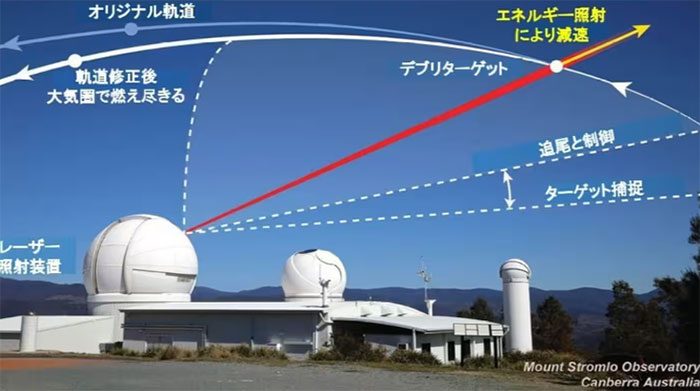Researchers Will Use Lasers to Slow Down Space Debris. The reduction in speed will decrease the trajectory of the debris until it re-enters Earth’s atmosphere and burns up.
EX-Fusion, a Japanese startup, is working on achieving what once seemed impossible: eliminating tiny pieces of space debris using laser beams fired from the ground.

Illustration of space debris – (Photo: EUSPA)
Space debris is formed from old satellites and rocket bodies when they collide at high speeds in orbit. Fragments as small as a few millimeters are believed to pose a risk to operational spacecraft and satellites.
Currently, with the growing development of space-related activities globally, the demand for monitoring and removing debris is increasing. Many countries around the world, including Japan, are addressing this issue by utilizing satellites.
EX-Fusion’s research is quite unique as it employs ground-based methods for managing space debris. In October 2023, EX-Fusion signed a memorandum of understanding with EOS Space Systems, an Australian contractor that possesses technology for detecting space debris.
According to the plan, the company will install high-powered laser shooting equipment within the observatory operated by EOS Space.
The first phase will involve establishing laser technology to track debris smaller than 10 cm – fragments that are typically difficult to target from the ground using lasers.
The second phase will see EX-Fusion and EOS Space attempting to remove debris by enhancing the power of the laser beam. The idea is to fire the laser at the debris from the opposite direction to slow it down. The reduction in speed will lower the trajectory of the debris until it re-enters Earth’s atmosphere and burns up.
High-powered lasers are often associated with weapons capable of blowing objects apart into fragments. However, according to EOS Space, the laser designed for removing space debris is entirely different from weapon-grade lasers.

EX-Fusion’s plan is to shoot lasers from the ground to slow down space debris, causing it to fall into Earth’s atmosphere – (Photo: Ex-Fusion)
Current laser weapons typically use fiber lasers that can cut and weld metals, capable of destroying targets like drones through the heat generated during continuous firing. In contrast, the debris removal device utilizes solid-state lasers pumped by semiconductor diodes (DPSS), which can exert force on fast-moving debris and reduce speed like a brake.
EX-Fusion’s unique laser synthesis process also incorporates DPSS lasers, which can strike the surface of hydrogen fuel pellets about a millimeter in diameter and compress them to trigger a fusion reaction.
According to the CEO of EX-Fusion, the power of the laser for removing space debris is significantly lower than that required for nuclear fusion reactions but shares similar technical challenges. This makes space debris removal a valuable test on the path to commercializing fusion technology.
EX-Fusion’s plan to remove space debris from the ground still faces challenges related to accuracy and power, but it has the advantage of being easier to upgrade and maintain because the equipment is on Earth.





















































